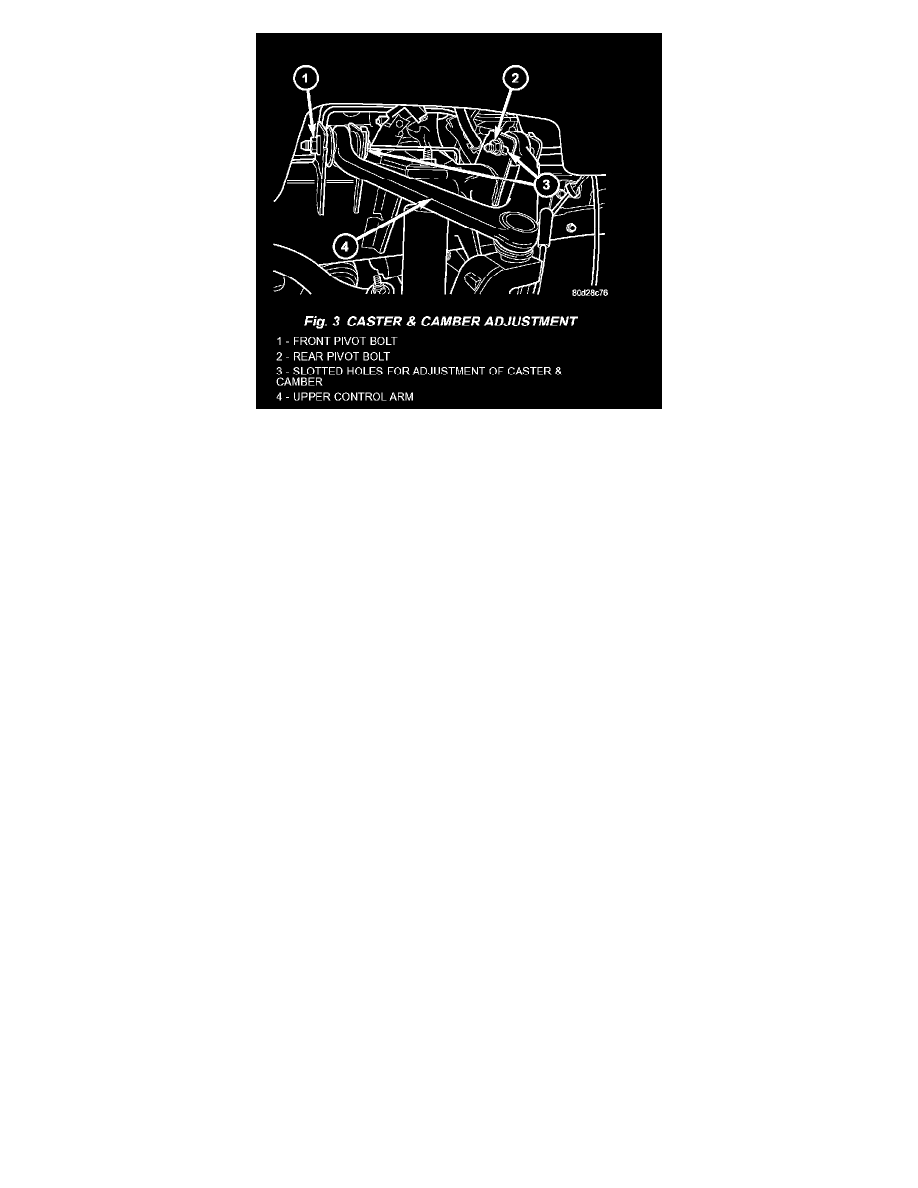RAM 1500 Truck 4WD V8-5.9L VIN Z (2002)

NOTE: When the upper control arm pivot bolts are loosened the upper control arm will normally go inwards toward the frame automatically with the
weight of the vehicle.
CASTER
Moving the front or rear position of the upper control arm in or out, will change the caster angle and camber angle significantly. To maintain the
camber angle while adjusting caster, move one pivot bolt of the upper control arm in or out. Then move the other pivot bolt of the upper control arm in
the opposite direction using special tool 8876 to move the upper control arm for proper adjustment.
To increase positive caster angle, move the rear position of the upper control arm inward (toward the engine). Move the front of the upper control arm
outward (away from the engine) slightly until the original camber angle is obtained using special tool 8876 to move the upper control arm for proper
adjustment.
CAMBER
Move both pivot bolts of the upper control arm together in or out. This will change the camber angle significantly and little effect on the caster angle
using special tool 8876 to move the upper control arm for proper adjustment.
After adjustment is made tighten the upper control arm nuts to proper torque specification.
TOE ADJUSTMENT
The wheel toe position adjustment is the final adjustment.
1. Start the engine and turn wheels both ways before straightening the wheels. Secure the steering wheel with the front wheels in the straight-ahead
position.
2. Loosen the tie rod jam nuts.
NOTE: Each front wheel should be adjusted for one-half of the total toe position specification. This will ensure the steering wheel will be
centered when the wheels are positioned straight-ahead.
3. Adjust the wheel toe position by turning the inner tie rod as necessary.
